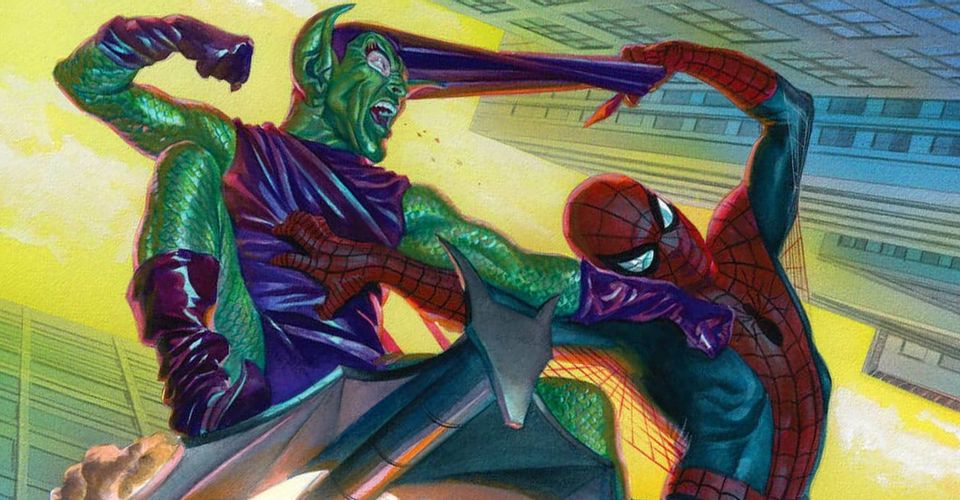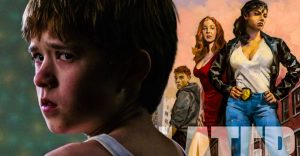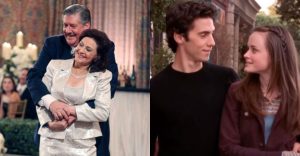Spider-Man Reveals The Huge Problem With Green Goblin’s Mask

While The Green Goblin’s iconic mask may be a frightening harbinger of evil to Peter Parker/Spider-Man, the Goblin’s veil comes with its own set of hindrances which greatly restrict the countenance of the wearer – it’s hard to truly express emotion with the mask.
Spider-Man’s arch-foe The Green Goblin, who may be Norman Osborn or his son Harry (depending on the circumstances) faces the perhaps more than any other Spidey rogues. The recent tie-in to The Amazing Spider-Man #54.1, the Last Remains tie in, by writers Nick Spencer (Avengers World) & Matthew Rosenberg (Hawkeye Freefall) joined by artists Federico Vicentini (Absolute Carnage) and Takeshi Miyazawa (Ghost-Spider), briefly alludes to the mystery surrounding the Green Goblin’s famed Halloween mask. While largely deadpan in nature, Harry’s facial expressions don’t quite match the fixed grin of the mask itself.
The Marvel Universe, let alone Spider-Man’s corner of the world, is filled to the brim with larger-than-life superheroes and supervillains who lift buildings on a daily basis, so having everyday humans relate to borderline gods is easier said than done. In selling the hero, Stan Lee and Steve Ditko would introduce Spider-Man as a harassed teenager with real problems which would be apparent in his expressions, remaining visible while masked. If readers could not relate completely, then Spider-Man may not have landed the way he did in the first place. It’s important for fans to get a sense of where their character’s mind is in the moment. It will be difficult for an artist to convey emotion for readers if an emotionless face obscuring mask is preventing that.

There’s a reason why Norman Osborn originally revealed his villainous alter ego to Peter in such a flamboyant fashion, aside from pure shock value. A masked Goblin revealing his identity and recounting his origin to Spidey wouldn’t have the same effect on Peter or readers as a Norman with his own authentic human facial mannerisms to express. Peter was seeing Norman not as the wealthy father he has been accustomed to but the villainous Goblin he’s been fighting for the past few issues.
Even the mainstream Marvel Cinematic Universe (MCU) understands the importance of characters expressing true emotion for its audiences. Tom Holland’s current interpretation of Spider-Man may be favorable to fan circles for being much younger than his past cinematic counterparts as well as smarter, but it doesn’t end there. MCU Spidey is equipped with camera shutter eye lenses, allowing other heroes, villains, and theatergoers to get a sense of his personal headspace. The inclusion of the moveable eye lenses is ultimately another key element of the comics brought to the silver screen. In the past film incarnations, Spider-Man has generally been a hero who appears ripped straight from the comic page with only one glaring omission. While minor in retrospect, Spidey’s unmovable eye lenses made it more ambitious to relate, which may explain why Peter’s mask is constantly torn from his face or mangled in each final battle sequence. However, in the comics and cartoons, this is a different story with the eyes of Spidey’s mask often moving to express emotion.
One can only hope that the same treatment may be done for Green Goblin in a future Spider-Man film (or series), considering a more comic accurate yet expressive mask was considered for the villain’s initial cinematic appearance in the past.
About The Author

















